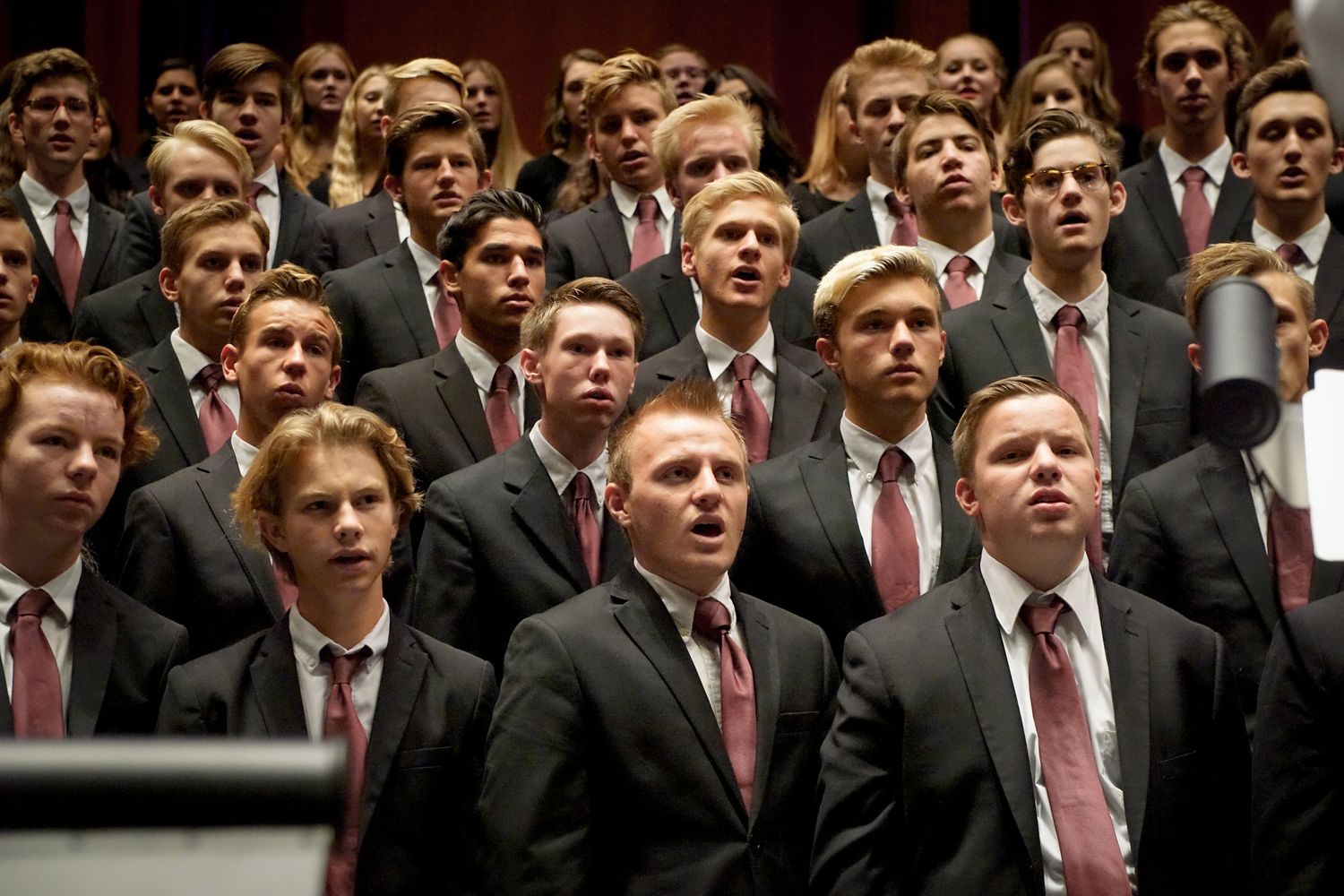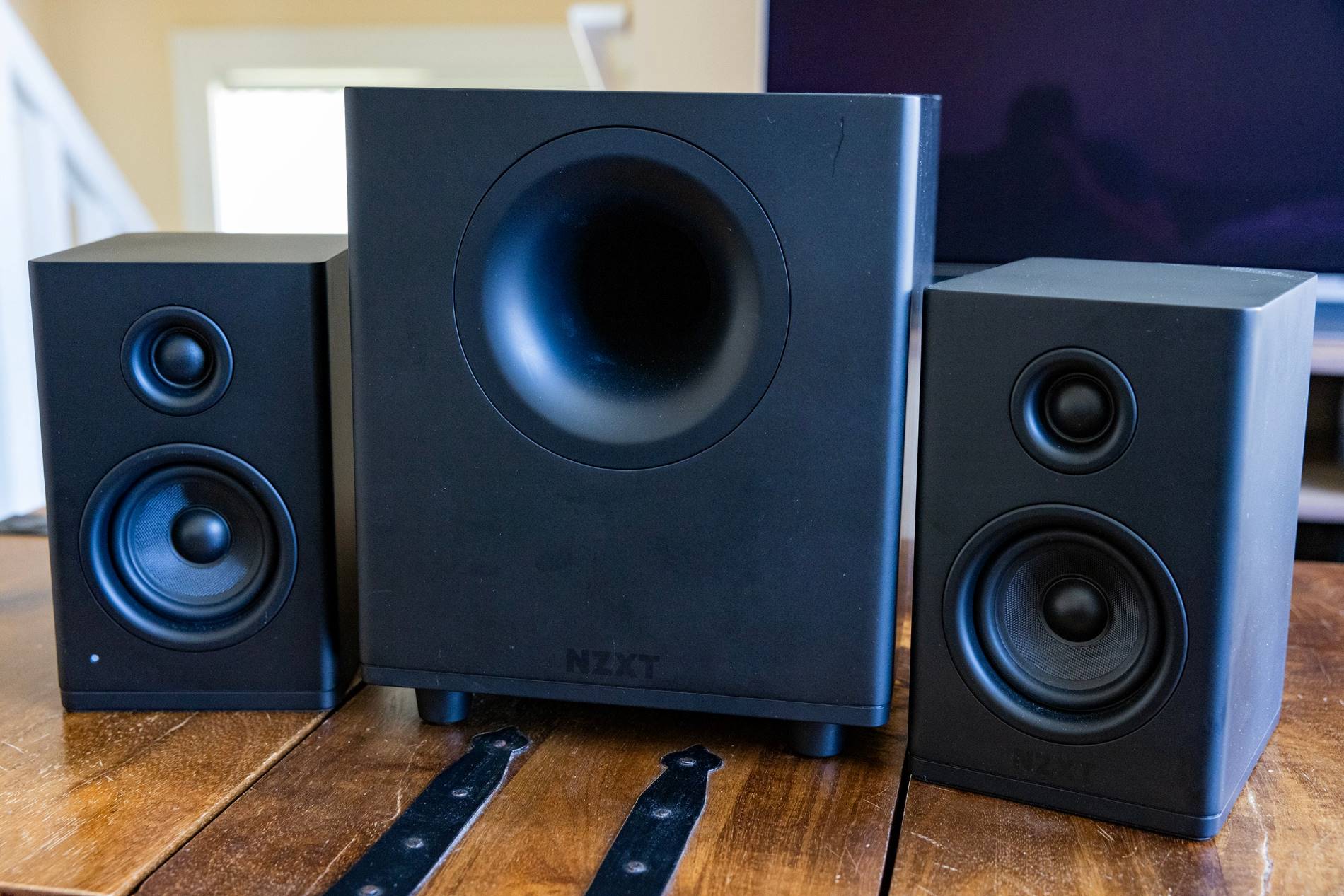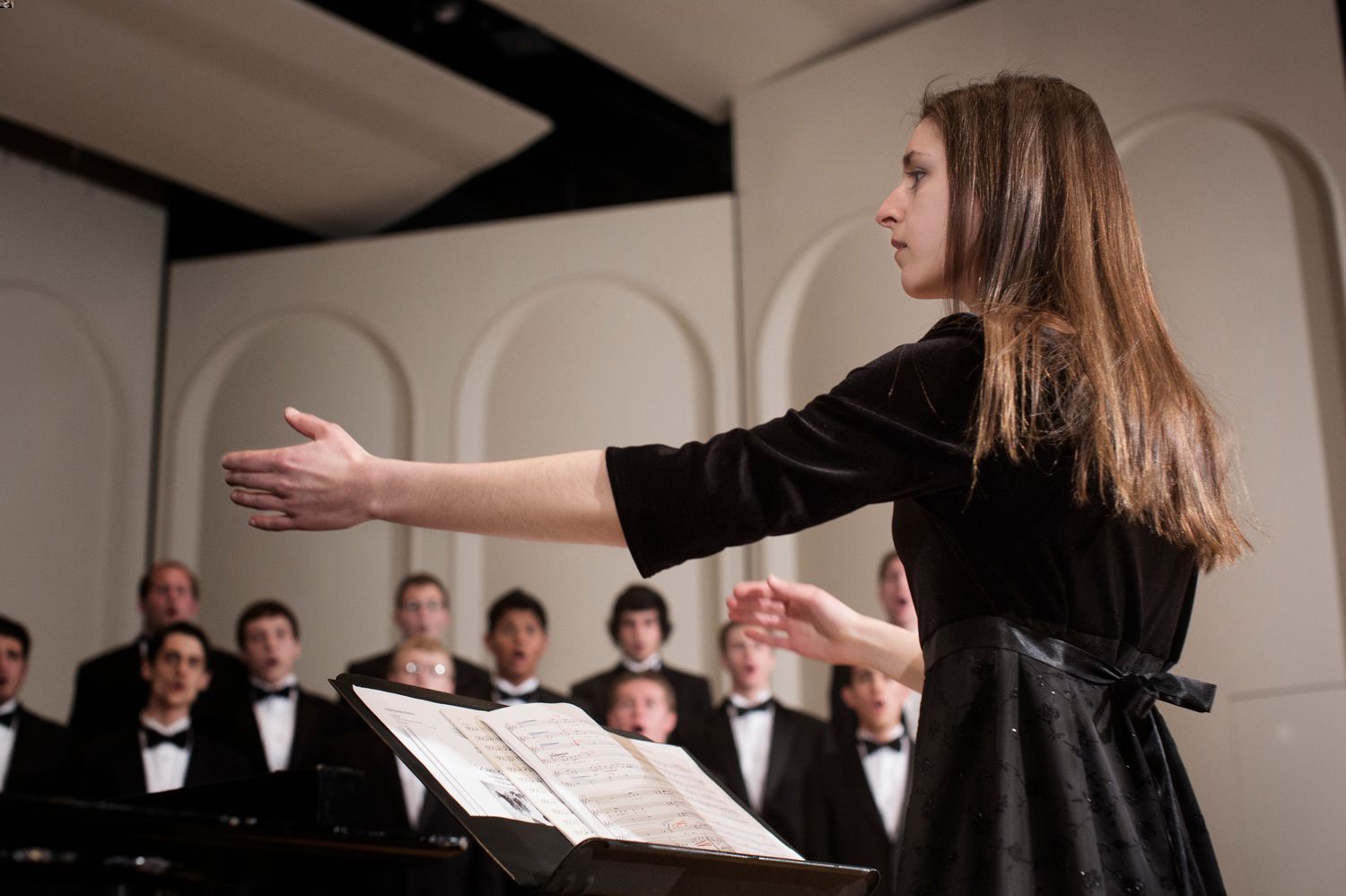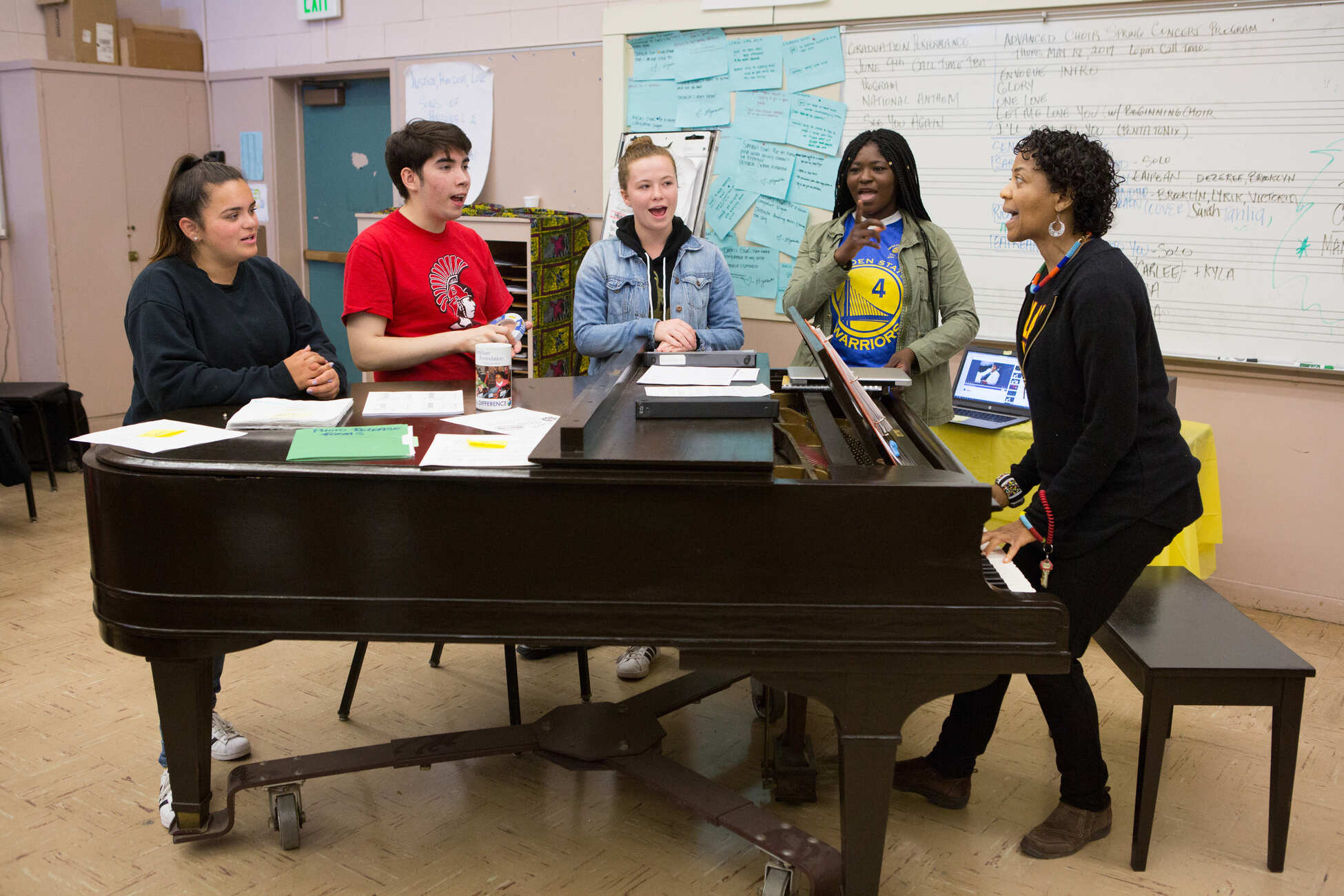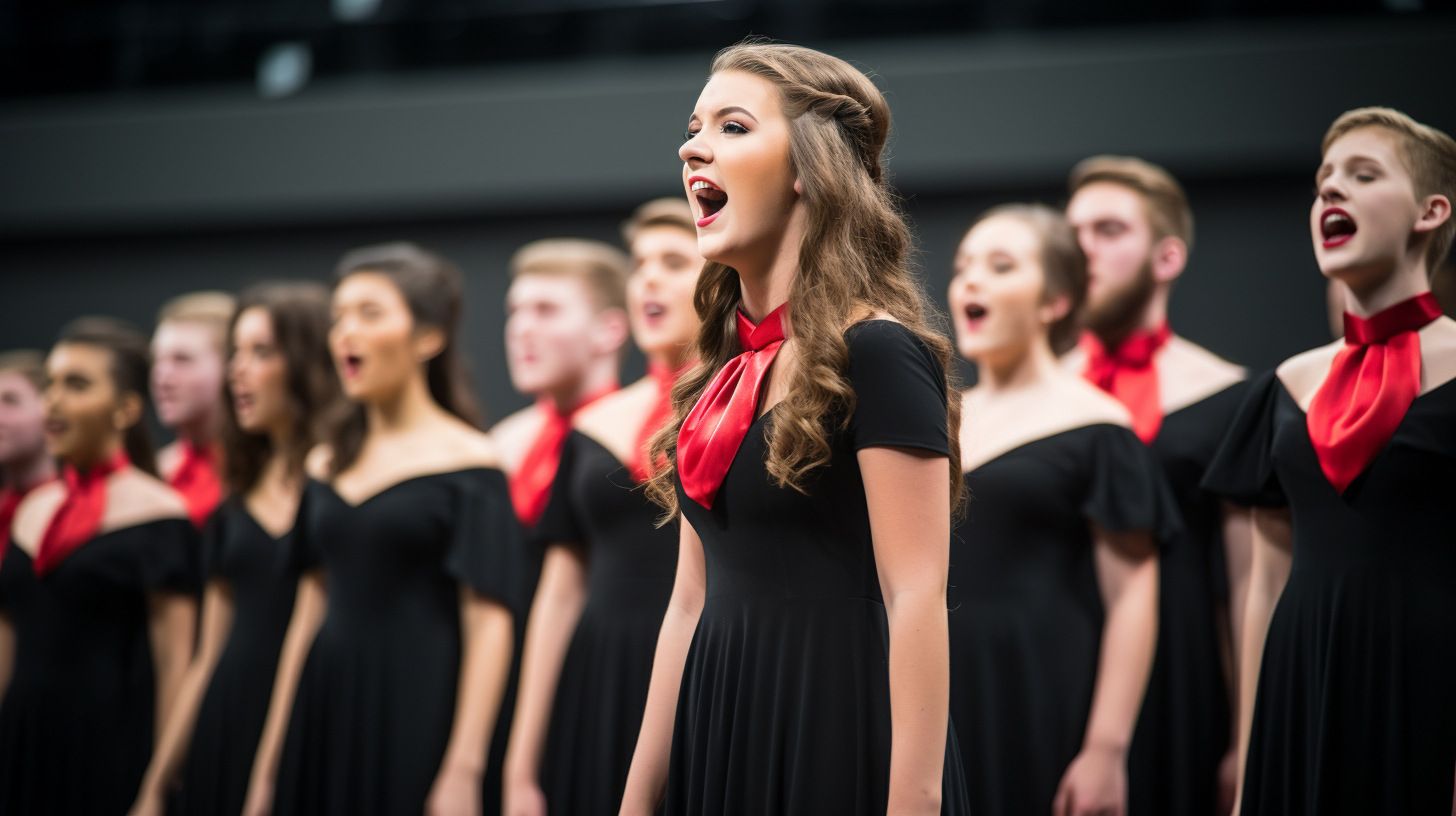Home>Production & Technology>Choir>How To Direct A Choir


Choir
How To Direct A Choir
Published: February 23, 2024
Learn how to direct a choir with expert tips and techniques. Master the art of leading and inspiring your choir to new heights.
(Many of the links in this article redirect to a specific reviewed product. Your purchase of these products through affiliate links helps to generate commission for AudioLover.com, at no extra cost. Learn more)
Table of Contents
Choosing the Right Repertoire
Selecting the right repertoire is a crucial aspect of directing a choir. It involves a thoughtful and strategic approach to cater to the choir's strengths, showcase their abilities, and engage the audience. Here are some essential factors to consider when choosing the repertoire:
-
Vocal Range and Abilities: The chosen pieces should align with the vocal range and abilities of the choir members. It's important to assess the vocal capabilities of the group and select pieces that allow them to shine while also challenging them to improve.
-
Diversity and Variety: A well-rounded repertoire should encompass a variety of musical styles, languages, and time periods. This diversity not only keeps the choir members engaged but also appeals to a wider audience. It can include classical masterpieces, contemporary compositions, folk songs, spirituals, and more.
-
Audience Appeal: Understanding the audience is key to selecting repertoire that resonates with them. Whether performing at a formal concert, religious service, or community event, tailoring the repertoire to suit the preferences of the audience enhances the overall impact of the performance.
-
Theme and Message: Choosing a theme or message for a performance can add depth and coherence to the repertoire. Whether it's exploring a specific emotion, telling a story, or conveying a social message, a thematic approach can create a more immersive and memorable experience for both the choir and the audience.
-
Choir Size and Composition: The size and composition of the choir play a significant role in repertoire selection. Pieces should be chosen with consideration for the balance of voices, ensuring that each section has meaningful contributions within the music.
-
Technical Challenges: While it's important to showcase the choir's strengths, it's equally valuable to select pieces that present technical challenges. This not only fosters growth and improvement within the choir but also keeps the repertoire interesting and dynamic.
-
Relevance and Timeliness: Incorporating current and relevant pieces into the repertoire can make the performance more relatable and impactful. It allows the choir to connect with contemporary audiences and stay culturally relevant.
By carefully considering these factors, a choir director can curate a repertoire that not only showcases the choir's talent but also resonates with both the performers and the audience, creating a truly memorable musical experience.
Vocal Technique and Warm-up Exercises
Vocal technique and warm-up exercises are fundamental components of choral rehearsals, playing a pivotal role in preparing the choir for optimal performance. These exercises serve to not only enhance vocal abilities but also promote vocal health and longevity. As a choir director, incorporating effective vocal techniques and warm-up exercises is essential for nurturing the choir's collective sound and individual vocal skills.
Importance of Vocal Technique
Developing proper vocal technique is crucial for singers to produce a rich, resonant sound while maintaining vocal health. Choir members must be guided in understanding and implementing techniques such as breath support, vocal placement, and diction. By emphasizing these fundamentals, a choir director empowers singers to produce a unified and balanced choral sound.
Warm-up Exercises
Warm-up exercises are designed to prepare the voice and body for singing. These exercises typically encompass a range of vocalizations, breathing exercises, and physical warm-ups. They serve to relax vocal muscles, improve breath control, and enhance vocal flexibility. Additionally, warm-ups can aid in building unity within the choir, as singers synchronize their voices and breathing patterns.
Vocal Health and Longevity
Incorporating vocal technique and warm-up exercises not only improves the immediate quality of the choir's sound but also contributes to the long-term vocal health of the singers. By emphasizing proper vocal production and providing opportunities for vocal warm-ups, a choir director fosters a supportive environment for singers to develop and maintain healthy vocal habits.
Tailoring Exercises to the Repertoire
Furthermore, tailoring warm-up exercises to the specific demands of the repertoire can significantly benefit the choir. For instance, if a piece requires sustained high notes, warm-ups focusing on vocal range and control can help singers meet the technical demands of the music. Adapting warm-ups to align with the stylistic and technical nuances of the repertoire ensures that the choir is well-prepared to deliver a compelling performance.
Uniting the Choir
Beyond the technical benefits, vocal warm-ups also serve as an opportunity to unite the choir as a cohesive ensemble. As singers engage in vocal exercises together, they develop a collective awareness of each other's voices, fostering a sense of unity and teamwork within the choir. This shared experience can strengthen the choir's bond and enhance their ability to perform as a harmonious unit.
In essence, vocal technique and warm-up exercises are indispensable tools for choir directors to cultivate a strong, healthy, and unified choral sound. By prioritizing vocal health, technical proficiency, and ensemble cohesion through these exercises, choir directors can empower their singers to deliver performances that are both artistically compelling and vocally sustainable.
Conducting Techniques
Conducting is a multifaceted art that goes beyond mere time-keeping; it is the means by which a choir director communicates musical interpretation, expression, and unity to the ensemble. Mastering conducting techniques is essential for guiding the choir through rehearsals and performances, shaping the musical narrative, and eliciting emotive and cohesive performances from the singers.
Physical Gestures and Baton Technique
Effective conducting begins with clear and deliberate physical gestures. The conductor's posture, hand movements, and facial expressions convey musical cues and phrasing to the choir. The use of a baton further enhances precision and clarity in communicating musical nuances. A skilled conductor employs a controlled and expressive baton technique, utilizing varying speeds, angles, and dynamics to articulate the subtleties of the music.
Beat Patterns and Tempo Control
Conducting involves establishing and maintaining a consistent beat pattern to guide the choir through the music. The conductor's beat patterns indicate the tempo, meter, and phrasing, providing a visual roadmap for the singers to follow. By employing clear and decisive gestures, the conductor shapes the choir's rhythmic precision, ensuring a unified and synchronized performance.
Expressive Gestures and Musical Interpretation
Beyond basic time-keeping, conducting encompasses a repertoire of expressive gestures that convey musical interpretation and emotion. Through nuanced arm movements, facial expressions, and body language, the conductor communicates dynamics, articulation, and stylistic elements to the choir. These gestures empower the singers to infuse the music with depth, passion, and sensitivity, resulting in a compelling and evocative performance.
Communication and Connection
Conducting techniques serve as a conduit for communication and connection between the conductor and the choir. The conductor's gestures and eye contact establish a nonverbal dialogue, fostering a sense of trust, attentiveness, and mutual understanding within the ensemble. This interpersonal connection enables the conductor to convey artistic vision, provide real-time feedback, and inspire the choir to collectively embody the expressive intent of the music.
Adaptability and Musical Insight
A proficient conductor demonstrates adaptability and musical insight, dynamically responding to the choir's performance in real time. This involves making instantaneous adjustments to the beat pattern, dynamics, or phrasing to guide the choir through challenging passages or unexpected musical developments. By remaining attuned to the choir's sound and energy, the conductor ensures a fluid and cohesive musical interpretation.
Rehearsal and Performance Integration
Conducting techniques seamlessly integrate rehearsal and performance dynamics, allowing the conductor to refine musical details during rehearsals and facilitate a polished and expressive performance. Through consistent and purposeful conducting, the choir internalizes the conductor's musical direction, resulting in a unified and artistically compelling presentation on stage.
In essence, mastering conducting techniques empowers choir directors to lead with precision, expressiveness, and insight, elevating the choir's musicality and fostering a deep connection between the conductor, the singers, and the audience. By honing these techniques, choir directors can orchestrate performances that resonate with emotional depth, technical proficiency, and artistic integrity.
Rehearsal Strategies
Rehearsal strategies form the cornerstone of effective choir direction, encompassing a spectrum of methodologies and approaches designed to optimize the choir's musical proficiency, ensemble cohesion, and performance readiness. A choir director's adept orchestration of rehearsal strategies is instrumental in nurturing the choir's artistic growth, refining their collective sound, and preparing them for impactful and polished performances.
Structured Planning and Organization
Central to successful rehearsal strategies is structured planning and organization. Choir directors meticulously outline rehearsal schedules, delineating specific objectives and allocating time for vocal warm-ups, repertoire review, and sectional rehearsals. This structured approach ensures that each rehearsal session is purposeful, efficient, and conducive to progressive musical development.
Sequential Learning and Repertoire Mastery
Rehearsal strategies often incorporate sequential learning, guiding the choir through a systematic exploration of each piece in the repertoire. This methodical approach enables singers to delve deeply into the musical intricacies, gradually mastering the technical, expressive, and interpretative elements of each composition. By fostering a comprehensive understanding of the repertoire, choir directors cultivate a nuanced and informed performance from the ensemble.
Sectional Rehearsals and Individual Support
Incorporating sectional rehearsals into the overall rehearsal strategy allows choir directors to provide targeted attention to specific vocal sections. This approach facilitates individualized support, addressing vocal challenges, refining harmonies, and strengthening section-specific dynamics. Sectional rehearsals not only enhance the cohesion and balance within the choir but also empower singers to contribute confidently to the collective sound.
Artistic Interpretation and Musical Expression
Rehearsal strategies are artfully crafted to nurture artistic interpretation and musical expression within the choir. Choir directors employ techniques to encourage singers to explore the emotional depth and narrative essence of the music, fostering a profound connection to the repertoire. By infusing rehearsals with opportunities for expressive exploration, choir directors guide the ensemble towards performances imbued with authenticity and emotive resonance.
Feedback Integration and Collaborative Dialogue
An integral aspect of effective rehearsal strategies is the integration of feedback mechanisms and collaborative dialogue. Choir directors foster an environment where constructive feedback is exchanged openly, allowing singers to contribute to the collective refinement of the choir's sound. This collaborative approach engenders a sense of ownership and commitment within the ensemble, driving continuous improvement and artistic evolution.
Performance Simulation and Artistic Polishing
Rehearsal strategies often encompass performance simulation, where choir directors orchestrate run-throughs and mock performances to simulate the ambiance and demands of actual concert settings. This immersive approach not only prepares the choir for the technical and emotional demands of live performances but also refines the ensemble's artistic presentation, ensuring a compelling and polished delivery on stage.
In essence, adeptly crafted rehearsal strategies are the bedrock of a choir director's artistry, providing the framework for musical exploration, ensemble refinement, and performance excellence. By deftly integrating structured planning, sequential learning, individualized support, expressive cultivation, collaborative dialogue, and performance simulation, choir directors fortify the choir's musical prowess and orchestrate performances that resonate with depth, cohesion, and artistry.
Communication and Leadership Skills
Communication and leadership skills are integral facets of effective choir direction, serving as the linchpin for fostering a cohesive, motivated, and artistically adept ensemble. A choir director's adept command of communication and leadership is pivotal in nurturing a collaborative and supportive environment, where singers feel empowered, valued, and inspired to collectively elevate their musicality and performance prowess.
Establishing Open Dialogue and Trust
Effective communication begins with establishing open dialogue and trust within the choir. A choir director adeptly cultivates an environment where singers feel encouraged to share their insights, concerns, and artistic aspirations. By fostering a culture of open communication, choir directors engender a sense of trust and camaraderie within the ensemble, laying the groundwork for collaborative growth and artistic exploration.
Articulating Artistic Vision and Expectations
Clear and articulate communication is essential for conveying the choir director's artistic vision and performance expectations. Through effective verbal and nonverbal communication, choir directors articulate their musical interpretations, expressive nuances, and performance objectives, ensuring that singers comprehend and internalize the intended artistic direction. This clarity fosters a unified understanding of the ensemble's musical goals and facilitates a cohesive pursuit of artistic excellence.
Empowering and Motivating the Ensemble
Adept leadership skills empower choir directors to motivate and inspire the ensemble, nurturing a collective sense of purpose and commitment. By providing constructive feedback, encouragement, and mentorship, choir directors bolster singers' confidence and foster a supportive environment for artistic growth. Through effective leadership, choir directors instill a shared passion for musical excellence, driving the ensemble to strive for continual improvement and unified artistic expression.
Conflict Resolution and Constructive Feedback
Effective communication and leadership encompass the adept management of conflicts and the facilitation of constructive feedback. Choir directors skillfully navigate interpersonal dynamics, addressing conflicts with empathy, fairness, and diplomacy. Additionally, they provide thoughtful and constructive feedback, guiding singers towards individual and collective refinement while nurturing a culture of mutual respect and growth within the ensemble.
Cultivating a Unified Artistic Identity
By skillfully leveraging communication and leadership, choir directors cultivate a unified artistic identity within the ensemble. They foster a shared understanding of the choir's musical identity, repertoire interpretation, and performance ethos, uniting singers in a collective pursuit of artistic excellence. This cohesive artistic identity, nurtured through effective communication and leadership, forms the bedrock of the ensemble's compelling and resonant musical presentations.
In essence, adept communication and leadership skills are pivotal for choir directors to cultivate a harmonious, motivated, and artistically adept ensemble. By establishing open dialogue and trust, articulating artistic vision, empowering the ensemble, managing conflicts, and nurturing a unified artistic identity, choir directors orchestrate an environment where singers thrive, collectively embodying the transformative power of choral music.
Performance Preparation and Presentation
Performance preparation and presentation constitute the culmination of a choir director's meticulous orchestration, where the collective efforts of rehearsals, artistic refinement, and ensemble cohesion converge to deliver a captivating and resonant musical experience. This pivotal phase encompasses a spectrum of strategic considerations and artistic nuances, each meticulously calibrated to elevate the choir's performance to its zenith.
Artistic Polishing and Refinement
In the lead-up to a performance, choir directors meticulously refine the ensemble's artistic interpretation, delving into the minutiae of musical expression, dynamics, and emotive resonance. This process involves fine-tuning vocal nuances, shaping phrasing, and cultivating a profound connection to the repertoire. Every artistic facet is meticulously polished to imbue the performance with depth, authenticity, and emotional impact.
Technical Rehearsals and Precision
Technical rehearsals are a cornerstone of performance preparation, where the choir's musical prowess is honed to precision. Choir directors meticulously guide the ensemble through detailed run-throughs, focusing on seamless transitions, vocal balance, and technical accuracy. These rehearsals ensure that the choir is adeptly prepared to navigate the demands of the performance with unwavering technical proficiency.
Stage Presence and Artistic Expression
Beyond vocal aptitude, choir directors cultivate the ensemble's stage presence and artistic expression. Through guidance on posture, movement, and facial expressions, singers are empowered to convey the emotive essence of the music with authenticity and poise. This attention to stage presence enhances the visual impact of the performance, complementing the choir's musical prowess with compelling artistic expression.
Audience Engagement and Connection
Performance preparation extends to nurturing the choir's ability to engage and connect with the audience. Choir directors instill techniques to establish a genuine rapport with listeners, fostering a sense of shared emotion and resonance. This connection transcends the confines of the stage, creating a transformative and immersive experience for both the choir and the audience.
Artistic Integrity and Unified Delivery
At the crux of performance preparation is the cultivation of artistic integrity and unified delivery. Choir directors ensure that the ensemble embodies a cohesive artistic vision, presenting a harmonious and unified interpretation of the repertoire. Every facet of the performance, from vocal delivery to expressive nuance, is meticulously calibrated to resonate with depth, cohesion, and artistic integrity.
In essence, performance preparation and presentation represent the culmination of a choir director's artistry, where meticulous refinement, technical precision, expressive depth, and audience connection converge to orchestrate a transformative and compelling musical experience. Through adept guidance and strategic orchestration, choir directors empower the ensemble to deliver performances that resonate with emotive resonance, technical prowess, and artistic excellence.

